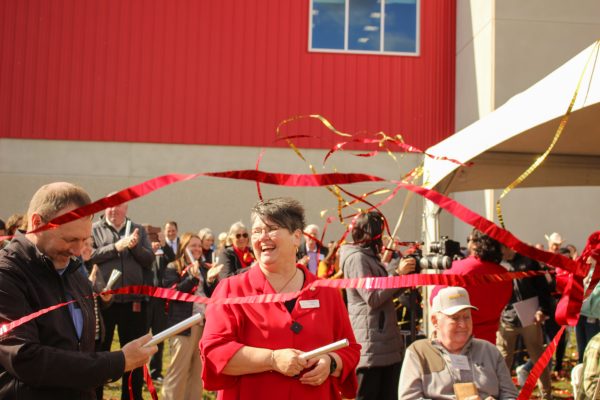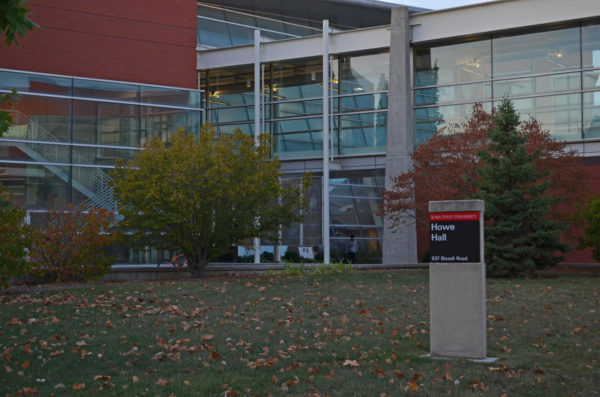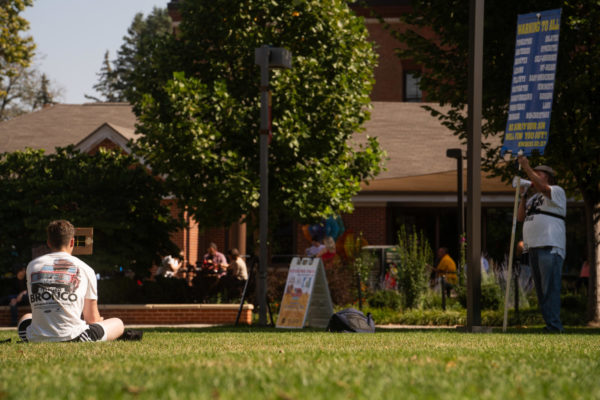NAEP results cause for discussion at university level
December 10, 2011
With the release of the 2011 National Assessment of Educational Progress test results, Iowa’s education system was brought into the state’s spotlight. While some Iowans see the issues surrounding the stagnant test results as an indication that Iowa K-12 students are not performing at their highest levels, many Iowa educators believe the cause of the 20 year stagnation may be due to poor teacher quality and differences in classroom curriculum.
The one question Iowans should now be asking with regard to these tests, according to Gary Phye, professor of psychology and curriculum and instruction, is: “How come other people are improving and we are not?” Phye said one reason for the data’s stagnation could be due to the curriculum, not the students.
“I would argue, in some respects, and I think this is what people are tending to ignore, is that these [scores] probably should be looked at not as indicators of individual student achievement as much as say reflecting stagnation in the curriculum. In other words, it’s not a kid problem, it’s more of a teaching or curriculum problem,” Phye said. In fact, according to Phye, the state right now is saying it is a combination of the two.
This year’s test, which measured a random sampling of fourth and eighth grade students from each of the 50 states, plus the District of Columbia and Department of Defense-run military schools, in the areas of mathematics and reading, showed that on average the national scores were rising while Iowa’s scores remained at the same levels they have been for the past 20 years.
Iowa’s fourth graders ranked 20 out of 52 in mathematics and 29 out of 52 in reading, while the state’s eighth graders ranked 25 out of 52 in mathematics and 32 out of 52 in reading. Twenty years ago, Iowa students were at the top of these rankings.
Iowa administrators are not only hoping education reform occurs in K-12 schools, but also at the university and college levels, where future teachers of Iowa are developing the skills to become quality education leaders.
“I think the lack of focus from the state level on educational change is what we haven’t had for 15 years, and now we’ve had it. It makes some people uncomfortable, but it needs to occur,” said Gary Richardson, superintendent of MOC-Floyd Valley Schools. He believes one important step in this reform is to start having conversations with undergraduate and graduate level institutions.
“There needs to be more of a conversation between the K-12 and the 13-16 as to what is to be expected,” said Richardson.
Richardson thinks there are currently problems with Iowa’s education system, and these problems need to be addressed.
“There is very little dialogue between the two-year and four-year universities and what is being taught in high school. All you hear about is the complaints that kids can’t do college work. Well, what is it that we need to do better? Or is it on your end?” Richardson said, who right now is also the superintendent of West Sioux Community Schools.
Elementary school principal for Rock Valley Community School District, Don Ortman, also believes universities need to pay closer attention to K-12 schools. Ortman hopes universities begin to take a closer look at their student expectations.
“I think all students of education are in class fewer days and hours than our K-12 students. Does that make sense? Is that helping them to become the best educator that they can be?” Ortman said.
This fall, according to an article in the Des Moines Register, Arizona State University began a program requiring its education students to complete a year-long apprenticeship, rather than the traditional semester like Iowa State University and most other universities around the country.
Arizona’s goal is for their undergraduate teacher preparation program to produce teachers at the same skill level as second-year teachers.
“A person never fully knows if he/she wants to be a teacher until he/she steps foot in a classroom outside of the role of student. Therefore, it’s important to spend time in the classroom with effective teachers and clear-set goals,” said Elizabeth Anderson, sophomore in elementary education. She believes the more hours in the classroom the better, but administrators need to make sure to balance the requirements.
Ortman thinks Arizona’s new requirement is a great concept, but there would have to be several changes made to universities’ existing plans, and several new issues would need to be addressed.
“Do we have too many students getting their teacher endorsements to make this logistically possible to implement a year-long apprenticeship? Should colleges and universities be more selective in who they allow into their schools of education especially in fields where there is an abundance of applicants like elementary education?” Ortman said.
In October of this year, Gov. Terry Branstad and Lt. Gov. Kim Reynolds introduced their “blueprint” on how to restore Iowa’s education system and compete with students, not only at a national level, but on a global one as well. This “blueprint” calls for reform focusing on teachers and principals, student expectations and achievement measures and education innovation.
“Our goal is lofty: Bring Iowa’s schools on par with the highest-performing education systems in the world,” wrote Jason Glass, director the Iowa Department of Education, in the conclusion to his proposal, titled “One Unshakable Vision: World-Class Schools for Iowa.”
“Achieving the goal of creating world-class schools will not happen overnight. It will take a sustained effort that withstands the winds of political change. The journey should begin now with Iowans’ renewed commitment to giving our children the best possible education,” Glass continued. “That moment is upon us.”
After graduating with a degree in elementary education, Elizabeth Anderson hopes to work alongside individuals who are good communicators, organized, positive, have good classroom management skills, are fair, open, caring, high goal setters and also fun. She said the most important quality in any teacher, though, is “knowing that each student has a full potential to do anything, and I need to help them get there.”
















